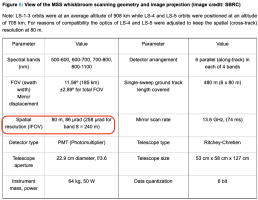An areal measurement including pixels would be something like density in pixels per square millimeter.
Yeah, which is what this conversation was originally about: pixel density in two dimensions instead of one.
Upvote
0
An areal measurement including pixels would be something like density in pixels per square millimeter.
Yes, it started here when you showed us that you don’t know how image resolution is defined. And it continued here when you showed us that you don’t know how areal resolution is measured (reminder: not in MP). If you’d like to continue this conversation, it should be with you admitting that you were wrong.Yeah, which is what this conversation was originally about: pixel density in two dimensions instead of one.
Yes, it started here when you showed us that you don’t know how image resolution is defined. And it continued here when you showed us that you don’t know how areal resolution is measured (reminder: not in MP). If you’d like to continue this conversation, it should be with you admitting that you were wrong.
Well, no. Notice the comment to which you were replying at the first link:Well, yeah. Notice the comment at the first link:
"Wouldn't that be 1.37x? A 24MP APS-C sensor would have the same density as a 61.44MP FF sensor."
Admittedly I could have worded the second linked comment better by making it clearer I was still talking about resolution per unit area in two directions on 50Mp and 20MP sensors of the same physical size.
Well, no. Notice the comment to which you were replying at the first link:
“The maximum extra resolution you could get on a 24 Mpx sensor vs a FF 45 Mpx is 1.17x…”
No, it wouldn’t be 1.37x extra resolution as you stated. It would be 1.17x extra resolution. You were mistaken in your understanding of the meaning of resolution as it pertains to images. You were wrong. Period.
Sure, you tried to reframe the question as a 2D measurement to wiggle out of being wrong. And did that badly, which is all you’ve really admitted.
It’s like someone said 3 + 3 = 6, and you replied wouldn’t that be 9? Then when called on it, your response was that you were right because you were talking about multiplication, not addition. Wiggling like a worm doesn’t change the fact that you were wrong.
I don’t get why you can’t just admit to being wrong. Everyone is, sometimes. Maybe it’s insecurity, as you brought up in the other thread. Or maybe it’s just that worms gonna wiggle.

Well, no. Notice the comment to which you were replying at the first link:
“The maximum extra resolution you could get on a 24 Mpx sensor vs a FF 45 Mpx is 1.17x…”
No, it wouldn’t be 1.37x extra resolution as you stated. It would be 1.17x extra resolution. You were mistaken in your understanding of the meaning of resolution as it pertains to images. You were wrong. Period.
Sure, you tried to reframe the question as a 2D measurement to wiggle out of being wrong. And did that badly, which is all you’ve really admitted.
It’s like someone said 3 + 3 = 6, and you replied wouldn’t that be 9? Then when called on it, your response was that you were right because you were talking about multiplication, not addition. Wiggling like a worm doesn’t change the fact that you were wrong.
I don’t get why you can’t just admit to being wrong. Everyone is, sometimes. Maybe it’s insecurity, as you brought up in the other thread. Or maybe it’s just that worms gonna wiggle.
Read here what resolution in optical systems means: https://en.wikipedia.org/wiki/Optical_resolutionFor someone who purports to be an expert in the medical field....
Areal density resolution in hard X-ray digital imaging system
The concept has been around a while in more visible light related optical disciplines as well...

See page 6 for this reference:
"Thus it is clear that the areal size of a resolution unit must be..."
Read here what resolution in optical systems means: https://en.wikipedia.org/wiki/Optical_resolution
"The resolution of a system is based on the minimum distance r at which the points can be distinguished as individuals." It is based on distance, not areas. It is 1-dimensional separation.
What does this "areal density(AD) resolution" actually mean?For someone who purports to be an expert in the medical field....
Areal density resolution in hard X-ray digital imaging system
LOL.For someone who purports to be an expert in the medical field....
Areal density resolution in hard X-ray digital imaging system
The concept has been around a while in more visible light related optical disciplines as well...

See page 6 for this reference:
"Thus it is clear that the areal size of a resolution unit must be..."


More wiggling, the definition of the focal plane isn't relevant to this discussion.Yes, optical resolution has been and is normally expressed in linear units, especially in optics labs.
Optics labs and college physics professors also insist that the focal plane is nowhere near the film/sensor of a camera, either. Even though camera manufacturers call them exactly that and call the mark they place on the top of their products the "focal plane" symbol. Different communities often have different nomenclature that often assign slightly or even radically different meanings to the same words.
But the concept of areal resolution/density is not a novel one by any means. It's been around for a long time.
